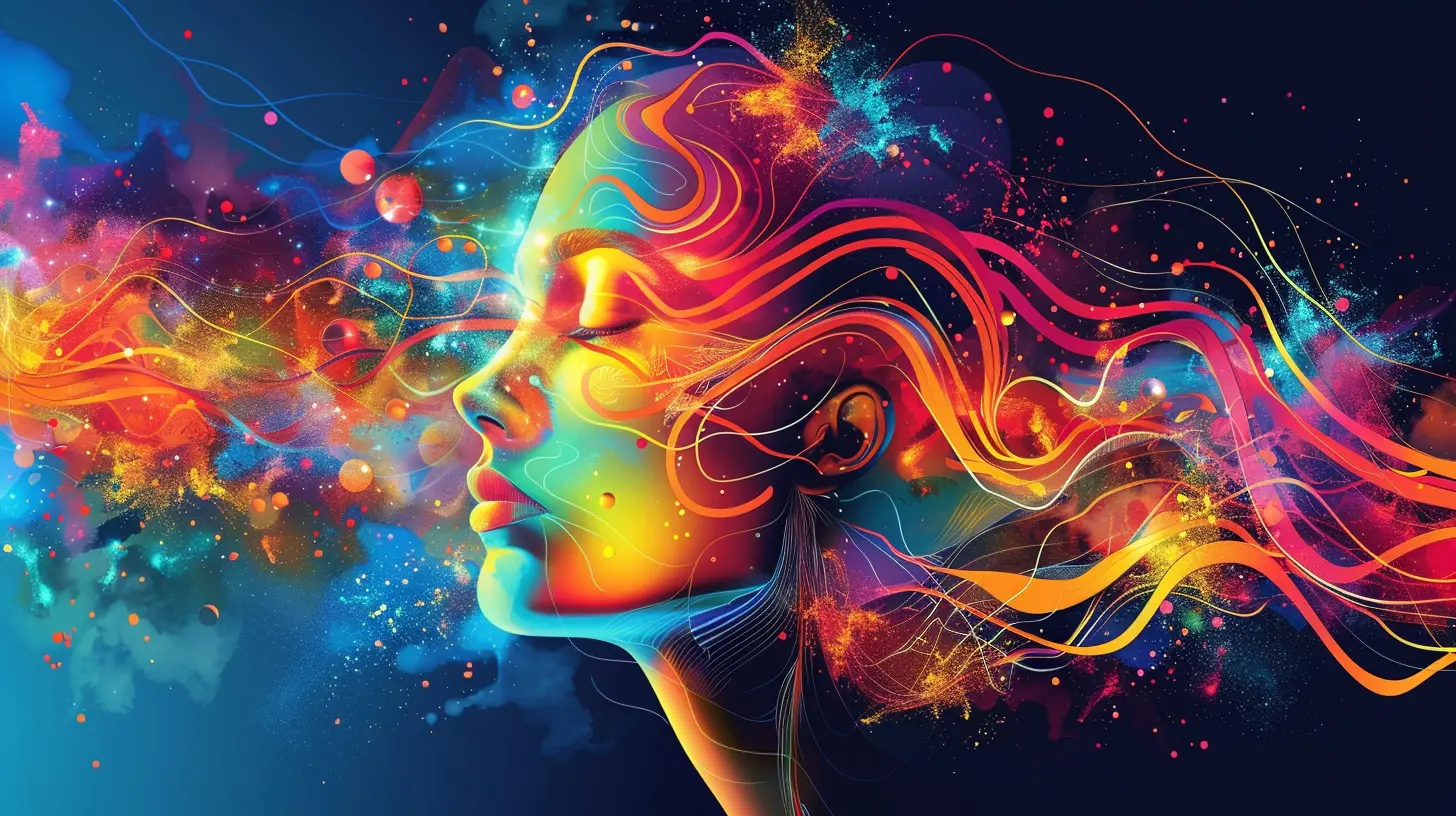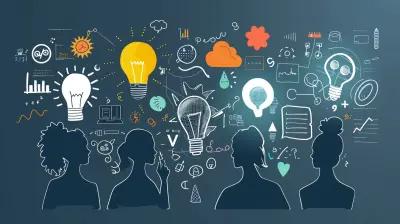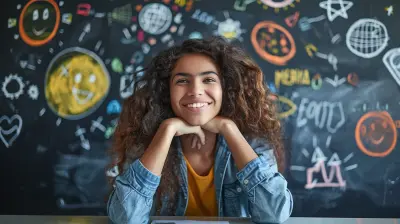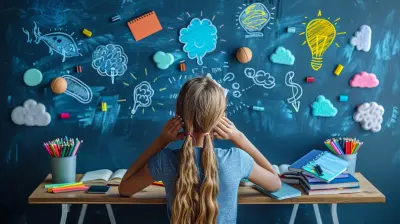The Role of Art and Music in Promoting Mental Wellness
7 November 2025
Have you ever felt a sudden wave of calm wash over you as your favorite song plays? Or maybe you’ve found unexpected peace while doodling on the corner of your notebook? That, my friend, is the magic of art and music. These creative expressions aren't just for fun or hobbies—they are powerful tools that help improve our mental well-being.
Let’s dive into the heartwarming, soul-soothing world of art and music, and how they work wonders for our minds.
🎨 Art and Music: The Universal Languages of the Soul
Art and music are like emotional translators. They help us process feelings we can’t always put into words. When you tap into these creative outlets, you're giving yourself permission to heal, grow, and connect with your emotions in healthy ways.Everyone speaks the language of creativity, whether they know it or not! You don’t have to be a professional painter or a chart-topping musician to benefit. Even humming your favorite tune or splashing color on a page counts.
🧠 Why Mental Wellness Matters More Than Ever
Let’s be real—life can be stressful. Between the demands of school, work, relationships, and juggling a million responsibilities, our mental health often takes a backseat. The world is waking up to the importance of mental wellness, and thank goodness for that!Mental wellness isn’t just the absence of anxiety or depression. It’s about feeling balanced, focused, calm, and resilient. It's having the emotional energy to enjoy life and handle challenges. And guess what? Art and music are two joyful roads that lead us there.
🖌️ The Healing Brushstrokes of Art
1. Art as a Form of Expression
Not great with words? No problem. Art gives you a voice when speaking feels impossible. Whether it’s painting, drawing, or even sculpting, you get to pour your thoughts and feelings into something tangible. You don’t have to make sense to anyone else—it’s your personal emotional playground.Ever tried coloring? It’s not just for kids. Adult coloring books are scientifically proven to reduce anxiety and calm the brain. Intricate patterns and soothing colors encourage mindfulness, almost like meditation with crayons.
2. Art Therapy is a Real Game-Changer
There’s a reason why art therapy exists—it works. Licensed art therapists guide people through creative processes that help them confront trauma, deal with anxiety, and improve self-esteem.Think of it like this: instead of talking about your feelings directly, you draw them. And then, with a little guidance, you explore your drawing and learn more about what’s going on inside.
3. Creating Builds Confidence
When you finish an art piece, no matter how simple it looks, there’s a sense of accomplishment. That feeling? It’s a shot of dopamine—the brain’s happy juice. Completing a creative task boosts confidence and gives you something to be proud of.
🎶 The Magical Power of Music for Mental Wellness
1. Music Soothes the Mind and Heart
Think about the last time you felt down. Did you reach for a sad song that totally understood your mood? Or maybe you needed a pick-me-up tune to lift your spirits? Music has that power—it can sync with our emotions and guide us toward a better state of mind.Listening to music can lower cortisol levels (that nasty stress hormone) and increase serotonin and dopamine. In other words, music literally helps your brain chill out and feel happier.
2. Music Is Mindfulness in Motion
Have you ever totally immersed yourself in a song? Like, really listened? That’s mindfulness. You’re living in the moment, aware of the sounds, rhythms, and lyrics. It pulls you away from anxious thoughts and brings you into the present.Playing an instrument has similar benefits. It requires focus, coordination, and emotional expression—all ingredients for a mindful experience that also gives your brain a healthy workout.
3. Sing Your Heart Out: It’s Good for You!
Singing isn’t just a shower-time hobby—it’s actually therapeutic. Group singing, like in choirs, has been shown to increase oxytocin (a feel-good hormone) and reduce feelings of loneliness and depression. Plus, belting out a tune is just really, really fun.Don’t worry if you're off-key—your mental health doesn’t care if you sound like Beyoncé or a sleepy cat. What matters is that you're engaging emotionally and physically, and that's where the magic lies.
🎤 Creative Expression in Everyday Life
Here’s the best part: you can bring art and music into your daily life without needing a degree or a studio.Start Small:
- Doodle while you’re on the phone.- Journal with colorful pens.
- Make a playlist for different moods.
- Grab an adult coloring book (or print pages online).
- Try your hand at karaoke—solo or with friends.
Build a Routine:
Set aside 10–15 minutes a day just to create. No pressure. No judgment. Whether it's banging on a drum pad or sketching in a notebook, your brain will thank you.Join Creative Communities:
Look for local art classes or join a music group. Being around other creative folks boosts motivation and helps you feel connected. Connection is a huge factor in mental wellness, and creativity helps form those bonds.🌈 Art, Music, and Emotional Intelligence
Ever notice how a painting or a song can make you cry, smile, or suddenly understand something about yourself? That’s emotional intelligence at work—being aware of your feelings and managing them wisely.Art and music help you become more emotionally literate. They improve empathy, enhance self-awareness, and strengthen your ability to handle tough emotions. It’s like giving your emotional muscles a daily gym session—no dumbbells required.
🏫 The Role of Art and Music in Education
Here’s a shoutout to schools embracing the arts! When students have access to creative outlets, their entire academic experience improves.Studies show that kids involved in music and art:
- Have better focus and memory
- Show improved performance in math and reading
- Are more self-disciplined and confident
- Experience fewer behavioral issues
More importantly, they’re happier. And happy students are more resilient, adaptable, and ready to take on the world.
🍀 Art and Music as Lifelong Wellness Tools
Mental wellness isn’t a one-time achievement—it’s a lifelong journey. And having tools like art and music in your emotional toolkit is a game-changer.They grow with you. As you mature, so does your relationship with creativity. You might start painting to ease stress in college and later turn it into a full-blown hobby. Or maybe you’ll take up the guitar during retirement. There’s no expiration date on creativity.
🎉 Let Go of Perfection and Embrace Joy
Here’s some truth: your art doesn’t have to be "good." Your music doesn’t need to be performable. The goal isn’t perfection—it’s expression.Let go of that inner critic. Paint outside the lines. Sing off-key. Dance like nobody's watching. These acts nourish your mind, lift your spirit, and bring joy that medication and therapy sometimes can't deliver on their own.
🧘 Final Thoughts: A Creative Path to Peace
Art and music are like emotional vitamins—they're essential for a healthy, happy state of mind. They help us process emotions, manage stress, connect with others, and discover ourselves in beautiful, meaningful ways.So next time you feel overwhelmed, pick up a paintbrush or put on your favorite playlist. Your brain (and your heart) will seriously thank you.
And remember, you don’t need to be an artist or musician to feel the benefits—just a human with feelings and a little curiosity.
Let creativity be your therapy, your celebration, and your companion in life’s ups and downs.
all images in this post were generated using AI tools
Category:
Mental Health In SchoolsAuthor:

Madeleine Newton
Discussion
rate this article
1 comments
Bryson McDougal
This article beautifully highlights how art and music can be powerful tools for enhancing mental wellness. By engaging creativity, individuals can express emotions, reduce stress, and foster a sense of community, making them vital for holistic health.
November 9, 2025 at 5:59 AM


